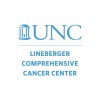
ROCKIF Trial: Re-sensitization of Carboplatin-resistant Ovarian Cancer With Kinase Inhibition of...
Ovarian CancerThe purpose of the study is to investigate the combination VS-6063, carboplatin, and paclitaxel. in the treatment of patients with ovarian cancer. The study will evaluate whether this regimen is safe. The study will also evaluate whether the regimen can reduce the amount of cancerous cells in your body. If you agree, you will be treated with VS-6063 by mouth, as well as carboplatin and paclitaxel infusions. Carboplatin and paclitaxel are approved by the FDA for the treatment of ovarian cancer. VS-6063 is considered experimental because it is not approved by the FDA for the treatment of cancer.

Administration of Autologous CAR-T CD19 Antigen With Inducible Safety Switch in Patients With Relapsed/Refractory...
Acute Lymphoblastic LeukemiaImmune System Diseases1 moreThe body has different ways of fighting infection and disease. No single way is effective at fighting cancer. This research study combines two different ways of fighting disease: antibodies and T cells. Antibodies are proteins that protect the body from disease caused by bacteria or toxic substances. Antibodies work by binding those bacteria or substances, which stops them from growing and causing bad effects. T cells, also called T lymphocytes, are special infection-fighting blood cells that can kill other cells, including tumor cells or cells that are infected. Both antibodies and T cells have been used to treat patients with cancers. They both have shown promise, but neither alone has been sufficient to cure most patients. This study combines both T cells and antibodies to try to create a more effective treatment. This investigational treatment is called autologous T lymphocyte chimeric antigen receptor cells targeted against the CD19 antigen (ATLCAR.CD19) administration. In previous studies, it has been shown that a new gene can be put into T cells that will increase their ability to recognize and kill cancer cells. A gene is a unit of DNA. Genes make up the chemical structure carrying the genetic information that may determine human characteristics (i.e., eye color, height and sex). The new gene that is put in the T cells makes a piece of an antibody called anti-CD19. This antibody can flow through the blood and can find and stick to leukemia cells because these leukemia cells have a substance on their surface called CD19. Anti-CD19 antibodies have been used to treat people with leukemia but have not been strong enough to cure most patients. For this study, the anti-CD19 antibody has been changed so that instead of floating free in the blood a piece of it is now joined to the surface of the T cells. Only the part of the antibody that sticks to the leukemia cells is attached to the T cells instead of the entire antibody. When an antibody is joined to a T cell in this way it is called a chimeric receptor. These CD19 chimeric (combination) receptor-activated T cells kill some of the tumor, but they do not last very long in the body and so their chances of fighting the cancer are unknown. Preliminary results of giving ATLCAR.CD19 cells to leukemia patients have been encouraging; however, many subjects receiving this treatment have experienced unwanted side effects including neurotoxicity and/or cytokine release syndrome (also referred to as cytokine storm or an infusion reaction). Cytokines are small proteins that interreact as e signals to other cells and are the way cells talk to one another. During cytokine release syndrome, too many cytokines are released and too many cells in your body react to their release. Symptoms resulting from cytokine release syndrome vary from flu-like symptoms to more severe side effects such as cardiac arrest, multi-system organ failure or death. We predict that about 50% of patients on this study will experience mild to severe cytokine release syndrome. To help reduce cytokine release syndrome symptoms in future patients, a safety switch has been added to the ATLCAR.CD19 cells that can cause the cells to become dormant or "go to sleep". The safety switch is called inducible caspase 9 or iC9. The modified ATLCAR.CD19 cells with the safety switch are referred to as iC9-CAR19 cells. The purpose of this study is to determine whether receiving the iC9-CAR19 cells is safe and tolerable (there are not too many unwanted effects). Researchers has previously tested different doses of the iC9-CAR19. An effective dose that had the least number of unwanted side effects in patients was identified. It was planned to test this dose in more patients to learn more about its effect in the body. This type of research study is called a dose expansion study. It will allow the investigators to collect more information about the effect of this dose in treating of certain type of cancer.

Pilot Study of Pembrolizumab Treatment for Disease Relapse After Allogeneic Stem Cell Transplantation...
Classical Hodgkin LymphomaB-cell Non-Hodgkin Lymphoma2 moreThis pilot study has been designed to investigate the safety of pembrolizumab treatment for disease relapse following allogeneic stem cell transplant (alloSCT). Pembrolizumab will be administered at a fixed dose of 200 mg IV every 3 weeks. Approximately 12-26 patients with relapsed MDS, AML, or mature B cell (B-NHL, cHL) malignancies that have relapsed following alloSCT will be enrolled on this trial. Pembrolizumab treatment will be administered for up to 24 months, provided that neither disease progression, nor development of a dose-limiting toxicity (DLT), has occurred. Adverse events will be monitored every three weeks throughout the trial and graded in severity according to the guidelines outlined in the NCI Common Terminology Criteria for Adverse Events (CTCAE) version 4.0. This trial will be conducted in accordance with Good Clinical Practices.

TVB 2640 for Resectable Colon Cancer Other Resectable Cancers; a Window Trial.
Colon CancerPrimary Objective • To evaluate the pharmacodynamic effects on metabolic endpoints (malonyl carnitine and tripalmitin levels) following short-term treatment with TVB-2640 in patients with resectable cancers Secondary Objectives To determine if short-term treatment with TVB-2640 decreases cancer cell proliferation. To examine other biological endpoints and determine if TVB-2640 inhibits cell survival signaling and lipid biogenesis. To perform comprehensive metabolomic analysis in tumor tissues to identify metabolic alterations induced by TVB-2640 treatment. To correlate FASN levels in tumor with metabolic and biological endpoints to determine if FASN inhibition has more pronounced effects in patients with increased expression.

Study Assessing The "Best of" Radiotherapy vs the "Best of" Surgery in Patients With Oropharyngeal...
Oropharyngeal CancerSupraglottic Squamous Cell Carcinoma1 moreOropharyngeal Squamous Cell Carcinoma (OPSCC) arises in the soft palate, tonsils, base of tongue, pharyngeal wall, and the vallecula. Most of the patients with early stage OPSCC are usually cured. Treatment of early stage OPSCC can be successfully achieved with primary surgery including neck dissection, as indicated, or with definitive radiotherapy. The current standard treatment for OPSCC is therefore based on either surgery and/or radiotherapy, both associated with comparable, high tumor control rates but with different side effects profiles and technical constraints. In order to decrease the potential morbidity of surgery, transoral approaches have been developed within the last decades, including transoral robotic surgery (TORS), transoral laser microsurgery (TLM) or conventional transoral techniques. On the other hand, patients with head and neck cancer treated with IMRT experienced significant improvements in cause specific survival (CSS) compared with patients treated with non-IMRT techniques thus suggesting that IMRT may be beneficial in terms of patient's outcomes and toxicity profile. It is as yet unclear however, which one of the new techniques is superior to the other in terms of function preservation. Given that the functional outcome of most importance is swallowing function, the preservation of swallowing is thus of major importance. The main objective of the study is to assess and compare the patient-reported swallowing function over the first year after randomization to either IMRT or TOS among patients with early stage OPSCC, SGSCC, and HPSCC.

Prognostic Analysis of Concurrent Chemoradiotherapy With/Without Adjuvant Chemotherapy for Locally...
Local Advanced High Risk Nasopharyngeal CarcinomaThis is a randomized,controlled,prospective phase III clinical trial. The purpose of this study is to evaluate acute toxicity and efficacy of concurrent cisplatin chemoradiation with or without capecitabine as adjuvant chemotherapy in Local Advanced Nasopharyngeal Carcinoma at High Risk of Distant Metastasis.Exploring an Individualized comprehensive treatment plan which is reasonable,effective,low toxicity and fitting with Modern radiotherapy techniques for Local Advanced Nasopharyngeal Carcinoma at High Risk of Distant Metastasis.

Durvalumab, an Anti-PDLI Antibody, and Tremelimumab, an Anti-CTLA4 Antibody, and Chemoradiation...
Esophageal AdenocarcinomaGastroesophageal Junction AdenocarcinomaThe purpose of this study is to test the safety of adding a new drug, durvalumab (also called MEDI4736), to chemoradiation with either FOLFOX/Capeox or carboplatin and paclitaxel, following initial chemotherapy with FOLFOX. The investigators want to find out what effects, good and/or bad, this combination has on the patient and cancer.

A Phase 3 Study of Pacritinib in Patients With Primary Myelofibrosis, Post Polycythemia Vera Myelofibrosis,...
Primary MyelofibrosisPost-polycythemia Vera Myelofibrosis1 moreThis study (study ID PAC203 North America; PAC303 ex-North America) is evaluating 200 mg BID of pacritinib compared to physician's choice (P/C) therapy in patients with MF and severe thrombocytopenia (platelet count <50,000/μL). Approximately 399 patients in total will be enrolled, randomized 2:1 to either pacritinib (approximately 266 patients) or to P/C therapy (approximately 133 patients) Condition or disease: Primary Myelofibrosis/Post-Polycythemia Vera Myelofibrosis/ Post-essential Thrombocythemia Myelofibrosis Intervention/treatment: Drug-Pacritinib

Chemotherapy With or Without Radiation or Surgery in Treating Participants With Oligometastatic...
Gastric AdenocarcinomaOligometastasis3 moreThis phase II trial studies how well chemotherapy with or without radiation or surgery works in treating participants with esophageal or gastric cancer that has spread to less than 3 places in the body (oligometastatic). Drugs used in chemotherapy, such as fluorouracil and capecitabine, work in different ways to stop the growth of tumor cells, either by killing the cells, by stopping them from dividing, or by stopping them from spreading. Radiation therapy uses high energy x-rays to kill tumor cells and shrink tumors. Surgery, such as complete surgical resection, may stop the spread of tumor cells by surgically removing organs or tumors. Giving chemotherapy with radiation or surgery may work better than chemotherapy alone in treating participants with oligometastatic esophageal or gastric cancer.

Pancreatic Cancer Adaptive Neoadjuvant Chemotherapy Trial
Pancreatic CancerThis is an open-label, phase II study in patients with resectable and borderline resectable pancreas cancer.
